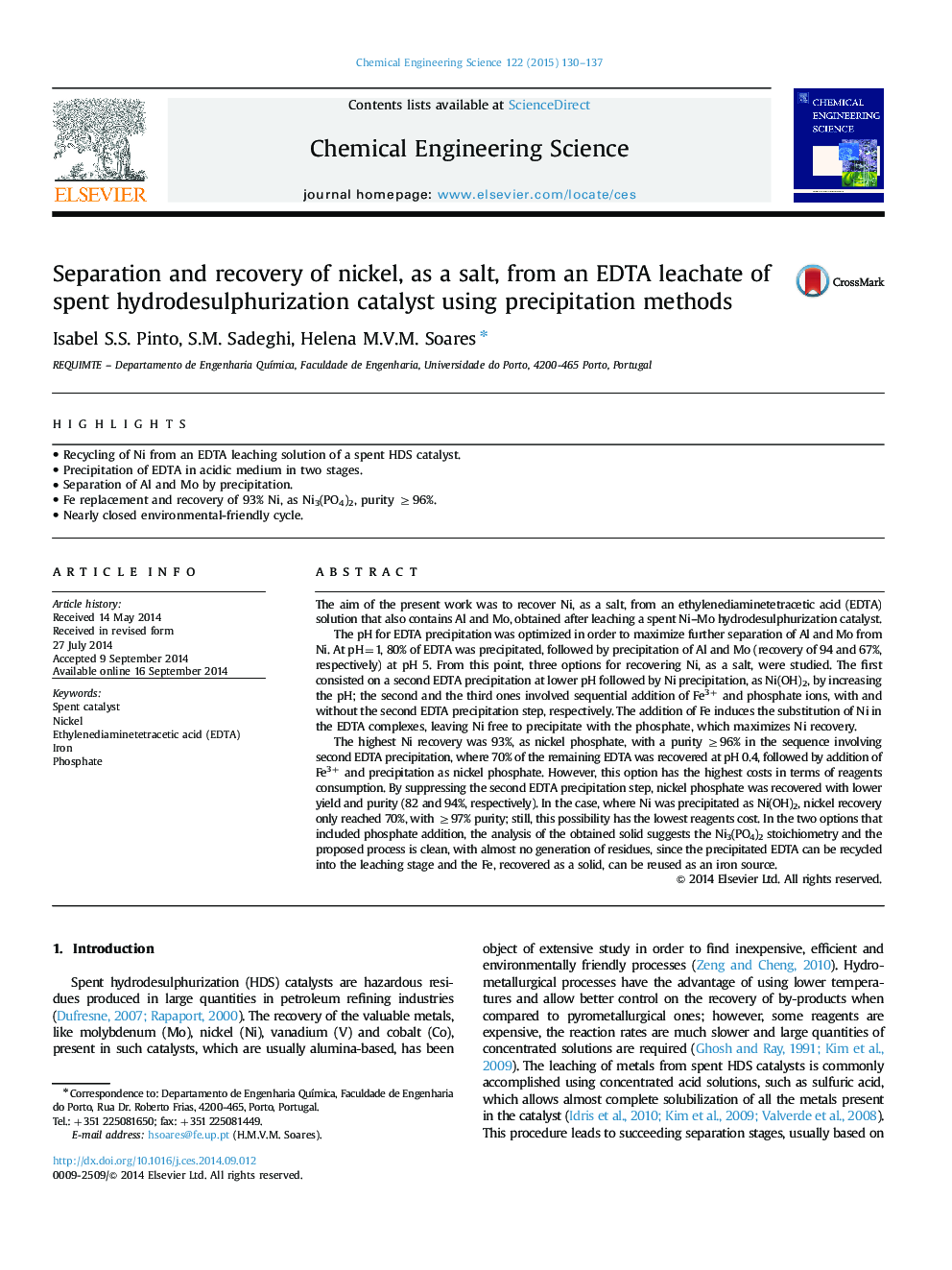| Article ID | Journal | Published Year | Pages | File Type |
|---|---|---|---|---|
| 6590700 | Chemical Engineering Science | 2015 | 8 Pages |
Abstract
The highest Ni recovery was 93%, as nickel phosphate, with a purity â¥96% in the sequence involving second EDTA precipitation, where 70% of the remaining EDTA was recovered at pH 0.4, followed by addition of Fe3+ and precipitation as nickel phosphate. However, this option has the highest costs in terms of reagents consumption. By suppressing the second EDTA precipitation step, nickel phosphate was recovered with lower yield and purity (82 and 94%, respectively). In the case, where Ni was precipitated as Ni(OH)2, nickel recovery only reached 70%, with â¥97% purity; still, this possibility has the lowest reagents cost. In the two options that included phosphate addition, the analysis of the obtained solid suggests the Ni3(PO4)2 stoichiometry and the proposed process is clean, with almost no generation of residues, since the precipitated EDTA can be recycled into the leaching stage and the Fe, recovered as a solid, can be reused as an iron source.
Keywords
Related Topics
Physical Sciences and Engineering
Chemical Engineering
Chemical Engineering (General)
Authors
Isabel S.S. Pinto, S.M. Sadeghi, Helena M.V.M. Soares,
